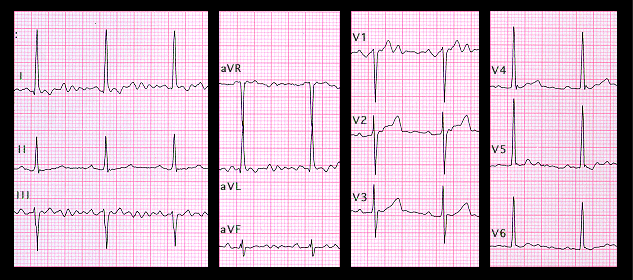
Occasionally, poorly applied electrodes, patient movement, of muscle tremors may cause electrical artifacts that may obscure the P waves and simulate atrial fibrillation. The tracing shown here, from a 75 year old female, is an example of this phenomenon. Sinus P waves are seen in leads II, V2,. V3 and V4, but in the other leads, the P waves are obscured by the irregular artifacts which give the appearance of atrial fibrillation. If only a single lead were available, a diagnosis of atrial fibrillation with a regular ventricular response suggesting an AV junctional rhythm might have been made.
As will be discussed later in this chapter, such artifacts, if large enough, may simulate ventricular rhythms, including ventricular tachycardia and fibrillation.
